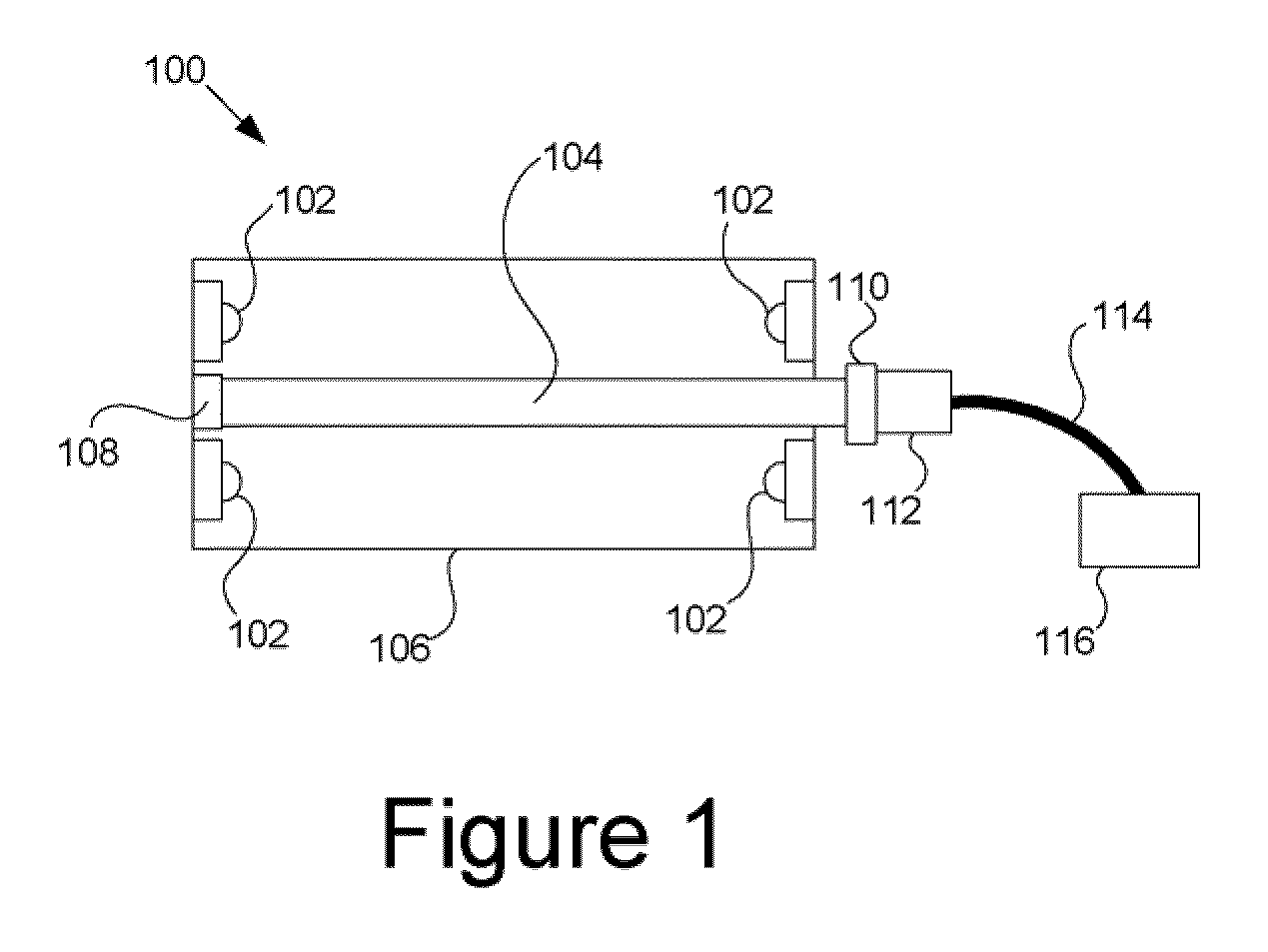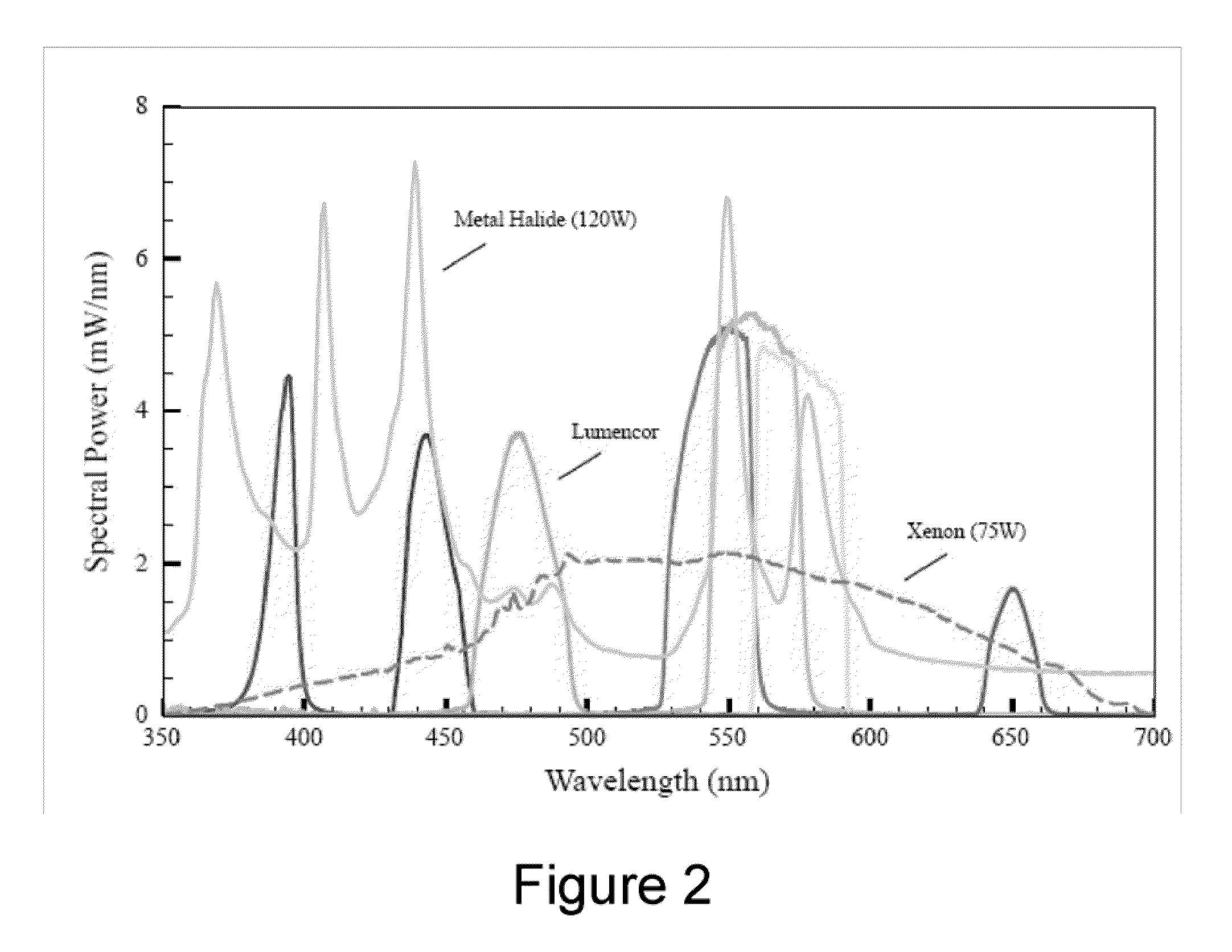Lighting design of high quality biomedical devices
a biomedical device and light-emitting diode technology, applied in the direction of luminescent dosimeters, optical radiation measurement, fluorescence/phosphorescence, etc., can solve the problem that the light-emitting manufacturers cannot provide all things for all applications, and achieve the effect of increasing the total wavelength rang
- Summary
- Abstract
- Description
- Claims
- Application Information
AI Technical Summary
Benefits of technology
Problems solved by technology
Method used
Image
Examples
Embodiment Construction
[0028]Shown in FIG. 1, is the light pipe engine 100 of an embodiment of the invention. An individual lamp module driven by light pipe technology consists of an excitation source 102, typically one or more LEDs, and a light pipe 104. In an embodiment, the excitation source 102 and light pipe 104 can be housed in a cylindrical waveguide 106. The excitation source 102 drives luminescence in the light pipe 104, which is composed of a glass or polymer fiber. In an embodiment, light pipe 104 includes a mirror 108. Glass fibers are either doped with a rare earth metal or activated with a transition metal. Polymer fibers are doped with a dye. The fibers have fast response and decay times and can achieve a high efficiency through the design of delivery optics. The design and selection of the fiber determines the peak wavelength of the output illumination; options exist to span the UV-Vis-NIR spectrum. The bandwidth of the luminescence is narrow and can be further defined with the use of band...
PUM
 Login to View More
Login to View More Abstract
Description
Claims
Application Information
 Login to View More
Login to View More - R&D
- Intellectual Property
- Life Sciences
- Materials
- Tech Scout
- Unparalleled Data Quality
- Higher Quality Content
- 60% Fewer Hallucinations
Browse by: Latest US Patents, China's latest patents, Technical Efficacy Thesaurus, Application Domain, Technology Topic, Popular Technical Reports.
© 2025 PatSnap. All rights reserved.Legal|Privacy policy|Modern Slavery Act Transparency Statement|Sitemap|About US| Contact US: help@patsnap.com



